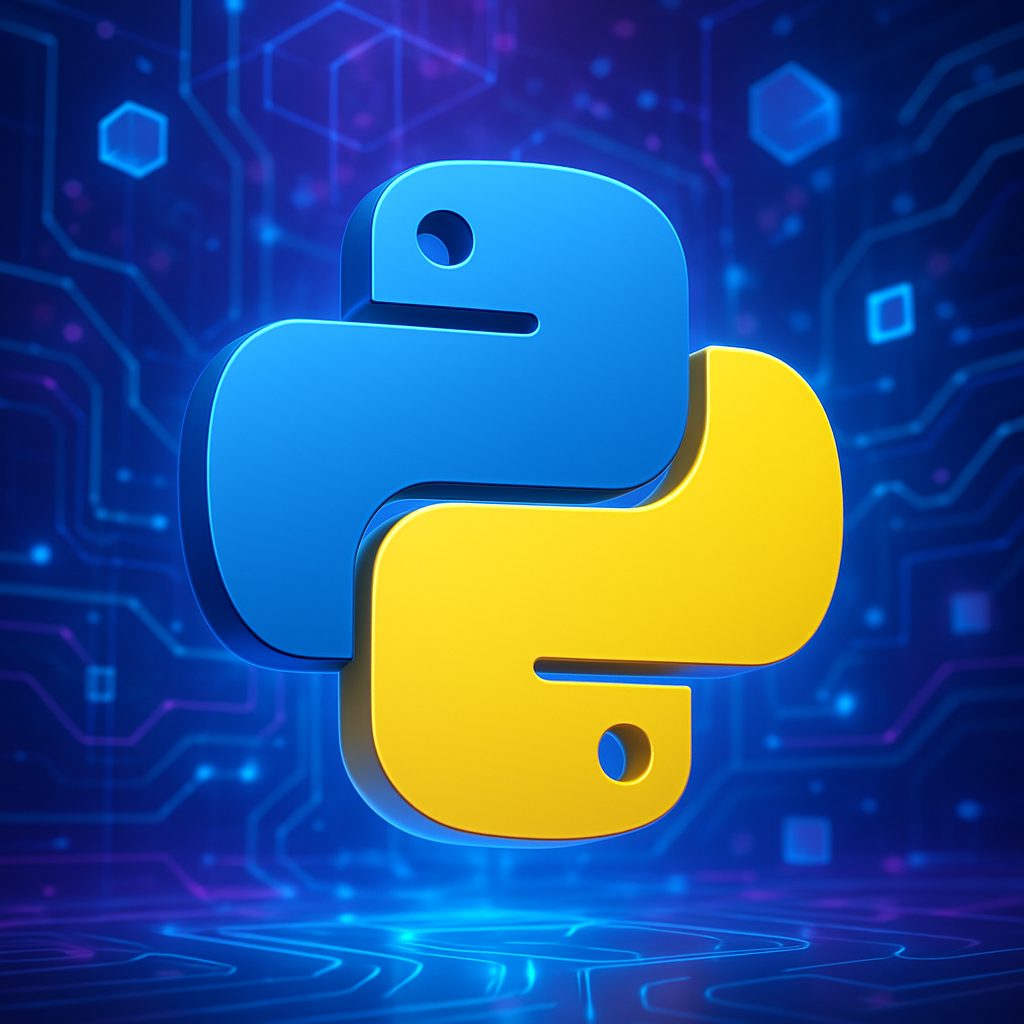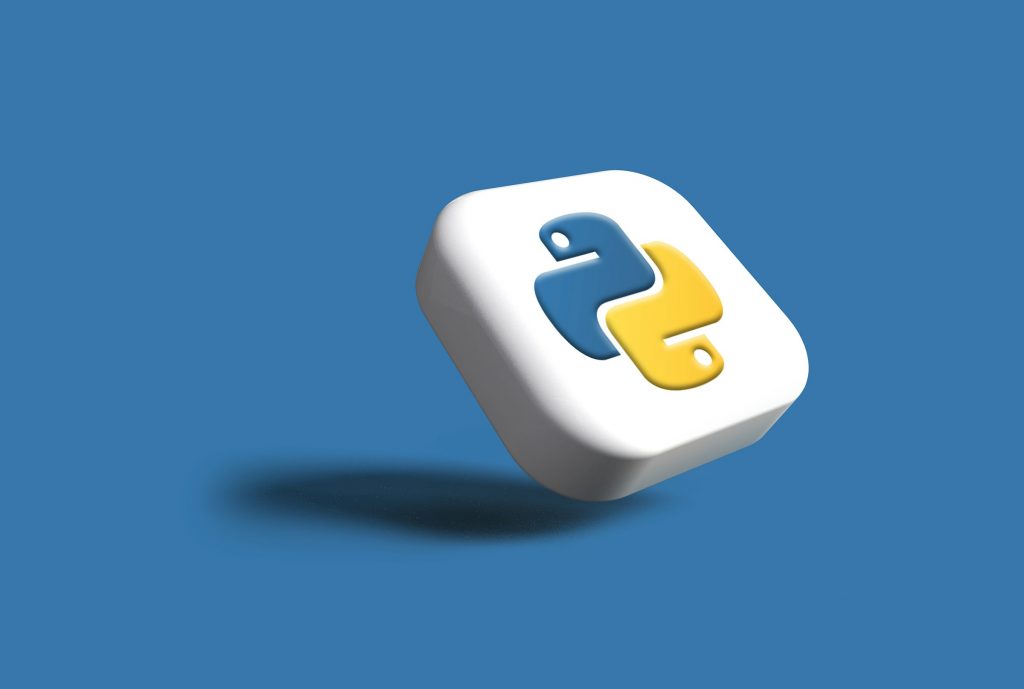Crafting Excellence in Software
Let’s build something extraordinary together.
Rely on Lasting Dynamics for unparalleled software quality.
Luis Lambert
Nov 05, 2025 • 10 min read

A very popular question today is: “Which programming language should I use? 🤔”. Everyone has an opinion, and nobody’s shy about sharing it. In 2025, the Python vs. “everything else” debate is louder than ever, not just in dev forums, but in boardrooms, startups, and enterprise IT departments.
Why? Because the choice of language isn’t just about syntax anymore. It’s about speed to market, scalability, maintainability, and future-ready preparation. Python’s rise to the top of global rankings is no coincidence. Its simplicity, gigantic ecosystem of libraries, and insanely supportive community make it a natural choice for everything from web apps to AI. But with fame comes competition. Old heavyweights like C, Java, and C# aren’t just sitting back, they each bring their own power moves to the fight.
While Python is celebrated for its flexibility and user-friendly syntax, it’s not without its internal inconsistencies, take, for example, the distinction between / and // for division. These subtle differences can sometimes lead to confusion, especially for newcomers. However, such quirks are also what give Python its distinctive character; they encourage developers to pay closer attention to detail and foster a deeper understanding of the language’s design choices. Ultimately, these idiosyncrasies contribute to both the language’s charm and its enduring appeal within the programming community.
So let's settle this. We’re going to walk through the big matchups, look at where each language shines (and stumbles), let's figure out if there’s a clear winner in 2025.

Python is a powerful and versatile language used across tech, from web apps to AI. Photo by Rubaitul Azad on Unsplash: https://unsplash.com/es/fotos/un-cubo-blanco-con-un-logotipo-amarillo-y-azul-ZIPFteu-R8k
Placing Python and C side by side highlights their distinct strengths and purposes. C is renowned for its speed, efficiency, and precise control, making it a foundational language for operating systems, kernels, and mission-critical applications for decades. Its ability to provide direct access to memory and hardware is incredibly powerful, though it does require careful attention, especially when managing pointers.
Python, by contrast, emphasizes simplicity and rapid development. As an interpreted language, it is highly readable and allows developers to write code quickly, making it ideal for prototyping and experimenting with new ideas. While Python may not match C's raw execution speed, it often excels in accelerating the development process, an increasingly valuable advantage in today’s fast-paced environment.
Performance benchmarks frequently show that C can be dramatically faster in computationally intensive tasks. However, building a prototype or bringing an idea to life in just a weekend is typically far more feasible with Python. For this reason, many teams combine both languages in their projects: Python handles high-level logic and user interaction, while C operates behind the scenes where performance is critical. This hybrid approach blends the strengths of both languages, offering a practical and effective solution for many real-world challenges.
Python and Java are both giants in the programming world, but they are both different in philosophies. Java has earned its place in the enterprise world. It’s statically typed, object-oriented, and powered by the JVM, which allows it to run across platforms efficiently. Huge corporations trust Java because it scales well, supports complex systems, and has decades of proven success in production.
Python, on the other hand, is dynamic and expressive. Its concise syntax allows developers to write less code to achieve the same result. That means prototypes get built faster, and ideas move from concept to execution in record time. This flexibility is one of the reasons Python has dominated areas like AI, data science, and web development.
When comparing performance, Java typically comes out ahead thanks to its just-in-time compilation and optimized runtime. But productivity isn’t always measured in CPU cycles. In domains where experimentation and iteration are essential, Python takes the lead. Frameworks reinforce this distinction. Java’s Spring is unmatched in enterprise-level applications, while Python’s Django and Flask shine in web development and rapid deployment. The smartest teams don’t choose one over the other, they use Java where structure and reliability are crucial, and Python where agility is the priority.
C# and Python are both high-level languages, but their primary use cases is different. Python, meanwhile, thrives in areas that require flexibility and adaptability. Automation scripts, machine learning workflows, cloud orchestration, and data analysis are where Python shines brightest. Its open-source nature and vast community ensure that it’s not tied to a single vendor or platform.
Let’s build something extraordinary together.
Rely on Lasting Dynamics for unparalleled software quality.
C#’s biggest strength is in long-term, structured projects. Its static typing and strong tooling help large teams maintain complex systems with fewer errors. Python trades some of that structure for ease of use, it’s quicker to start, but may require more discipline in large codebases.
In practice, organizations often use both. For example, a company may build its main product in C# but rely on Python for machine learning or automated testing. This complementary relationship shows why the debate shouldn’t be about replacement, but about integration. At the end what matters is how they use both, rather than their own power.
C++ is the language of choice for performance-critical applications. Game engines, real-time simulations, trading platforms, and 3D modeling software all rely heavily on its low-level power. Developers can fine-tune performance at a granular level, something no interpreted language can match.
But with that power comes complexity. C++ is notoriously challenging to learn, with a steep learning curve and countless details to master. Beginners often struggle with memory management, pointers, and templates. It rewards expertise but punishes mistakes. Python takes a different path. It abstracts away the difficult parts, letting developers focus on logic rather than mechanics. This makes it far more approachable, especially for those new to programming. That’s why many universities teach Python as a first language, it lowers the barrier to entry.
Despite their differences, Python and C often coexist in modern tech stacks. This hybrid approach is common in scientific computing and AI, where Python serves as the “glue” language for high-performance C libraries and contributing for the digital transformation.

When comparing Python vs Java, and C, it’s clear that each language excels in different domains. C is the go-to for system-level programming, offering unmatched performance and control. Java dominates enterprise and Android development, providing scalability and reliability. Python leads in data science, AI, automation, and rapid prototyping, thanks to its simplicity and vast ecosystem.
Performance benchmarks consistently show C at the top, followed by Java, with Python trailing due to its interpreted nature. However, development speed tells a different story: Python enables 2-10 times faster development for many tasks compared to C or Java, making it ideal for projects where time-to-market is critical. Java’s static typing and mature frameworks make it a safe bet for large, long-lived systems, while Python’s flexibility is unmatched for experimentation and research.
The choice among these languages often depends on project requirements, team expertise, and long-term goals. Many organizations use a combination of all three, leveraging C for performance, Java for scalability, and Python for innovation and data-driven tasks. This polyglot approach maximizes strengths and mitigates weaknesses, ensuring robust, future-proof solutions.
The Python 2 vs. Python 3 debate was one of the longest-running dramas in the programming world. For years, developers were split between the old version, which had a huge codebase and community support, and the new version, which introduced improvements but wasn’t backward compatible.
Python 3 fixed a lot of issues that made Python 2 cumbersome: Unicode support, clearer syntax, better error handling, and more consistent libraries. But the migration wasn’t easy. Many companies hesitated to switch because rewriting large codebases is expensive.
The community’s shift to Python 3 is now nearly complete, with most major libraries and frameworks dropping support for Python 2. This modernization has solidified Python’s position as a leading language for data science, AI, and web development, ensuring ongoing relevance and innovation.
Picking the right programming language is almost never a simple decision, and the whole “Python vs” debate really brings out some common headaches. Performance is a big one: Python is fantastic for fast development and flexibility, but when it comes to raw execution speed, it tends to lag behind languages like C, Java, and C#. This can be a dealbreaker for projects where low latency and efficient resource usage are absolutely critical.
Ecosystem fit is another challenge. Python’s library ecosystem is huge, but there are certain areas, like game development with C# and Unity, or massive enterprise backends with Java, where other languages just make more sense. If you need to connect Python with legacy systems or squeeze out every bit of performance, you’ll often need extra tools and know-how, like Cython or writing C extensions.
Team expertise and maintainability matter.. Python’s simplicity makes it super approachable, but its dynamic typing can lead to runtime errors that would be caught earlier in statically typed languages like C# or Java. Balancing these trade-offs means you really have to think about your project’s needs, your team’s strengths, and how you’ll maintain things in the long run.
Despite its performance limitations, Python offers numerous benefits that have driven its widespread adoption. Its simple, readable syntax accelerates development and lowers the barrier to entry for new programmers. This has made Python the most popular introductory language in universities and coding bootcamps worldwide.
Python’s community is one of the largest and most active, with over 8 million developers and a vast ecosystem of libraries and frameworks. This support network ensures that developers can quickly find solutions to problems, access high-quality documentation, and contribute to ongoing innovation.
The language’s versatility is another major advantage. Python is used in web development, data science, AI, automation, scripting, and more. Its cross-platform nature and ability to interface with other languages make it a “glue” language in complex systems, enabling rapid prototyping and seamless integration with performance-critical components written in C or C++.
When evaluating Python against C, Java, and C#, it’s important to consider the features and tech stacks that define each language. Python’s dynamic typing, interpreted execution, and extensive standard library make it ideal for rapid development and experimentation. Its support for multiple programming paradigms, procedural, object-oriented, and functional, adds to its flexibility.
C’s strengths lie in its low-level access to memory and hardware, making it indispensable for system programming and embedded development. Java’s strong typing, garbage collection, and mature frameworks support large-scale, enterprise-grade applications. C# combines the productivity of high-level languages with the performance of compiled code, excelling in Windows and game development.
From idea to launch, we craft scalable software tailored to your business needs.
Partner with us to accelerate your growth.
At Lasting Dynamics, we approach technology choices with pragmatism. We don’t see the “Python vs” debate as about winners and losers, but about selecting the right tool for the problem at hand to design and implement the best software solution.
Python is our go-to for prototyping, automation, and AI-driven projects, where speed and flexibility matter most. But when performance or scalability requirements are critical, we don’t hesitate to use C, C++, or Java. By combining languages strategically, we ensure that the solutions we build are not only efficient but also future-proof.
This approach allows us to deliver systems that balance speed, stability, and innovation, exactly what modern businesses need.

The whole “Python vs” conversation is still very much alive, with new trends and tech constantly changing the programming scene. Python’s stronghold in AI, data science, and automation doesn’t look like it’s going anywhere, especially as its libraries and frameworks keep getting better. Plus, since Python is so popular in education, there’s always a fresh wave of new developers joining the community, which only strengthens its position.
Looking ahead, things like AI-powered development tools, cloud-native architectures, and open-source collaboration will keep shaping which languages people choose. Python’s simplicity and flexibility put it in a great spot for future growth, but C, Java, and C# will still be crucial for certain specialized areas. The future is going to be all about interoperability, adaptability, and keeping up with evolving best practices.
The ongoing “Python vs” debate really highlights just how diverse and dynamic the programming world is. Every language: Python, C, Java, and C#, has its own strengths and trade-offs, and they all influence how we build software in 2025 and beyond. Python stands out for its simplicity, versatility, and thriving ecosystem, making it a go-to for rapid development, data science, and automation.
Meanwhile, Java, C, and C# are still the backbone for performance-heavy, enterprise, and platform-specific projects. By understanding what sets these languages apart, following best practices, and taking a pragmatic, polyglot approach, both organizations and developers can create robust, scalable, and future-proof solutions. The key isn’t to find a one-size-fits-all answer, but to pick the right tool for each job, guided by data, experience, and the latest industry trends.
Ready to make the right technology choice for your next project? 👉 Contact Lasting Dynamics today for expert guidance on Python, C, Java, C#, and more. Our team will help you architect, develop, and scale solutions tailored to your business needs. Don’t leave your tech stack to chance, partner with Lasting Dynamics and build for the future!
Python is an interpreted, high-level language focused on readability and rapid development, while C is a compiled, low-level language optimized for performance and system-level programming.
Choose Python for rapid prototyping, data science, AI, and automation. Java and C# are better suited for enterprise-scale, performance-critical, or platform-specific applications.
/ performs floating-point division, always returning a float, while // performs floor division, returning the largest integer less than or equal to the result
We design and build high-quality digital products that stand out.
Reliability, performance, and innovation at every step.
== checks for value equality, while is checks for object identity. Use == for comparing values and is for checking if two references point to the same object
While Python is not as fast as C, Java, or C#, it can be integrated with these languages for performance-critical modules, combining productivity with speed
Transform bold ideas into powerful applications.
Let’s create software that makes an impact together.
Luis Lambert
I’m a multimedia designer, copywriter, and marketing professional. Actively seeking new challenges to challenge my skills and grow professionally.